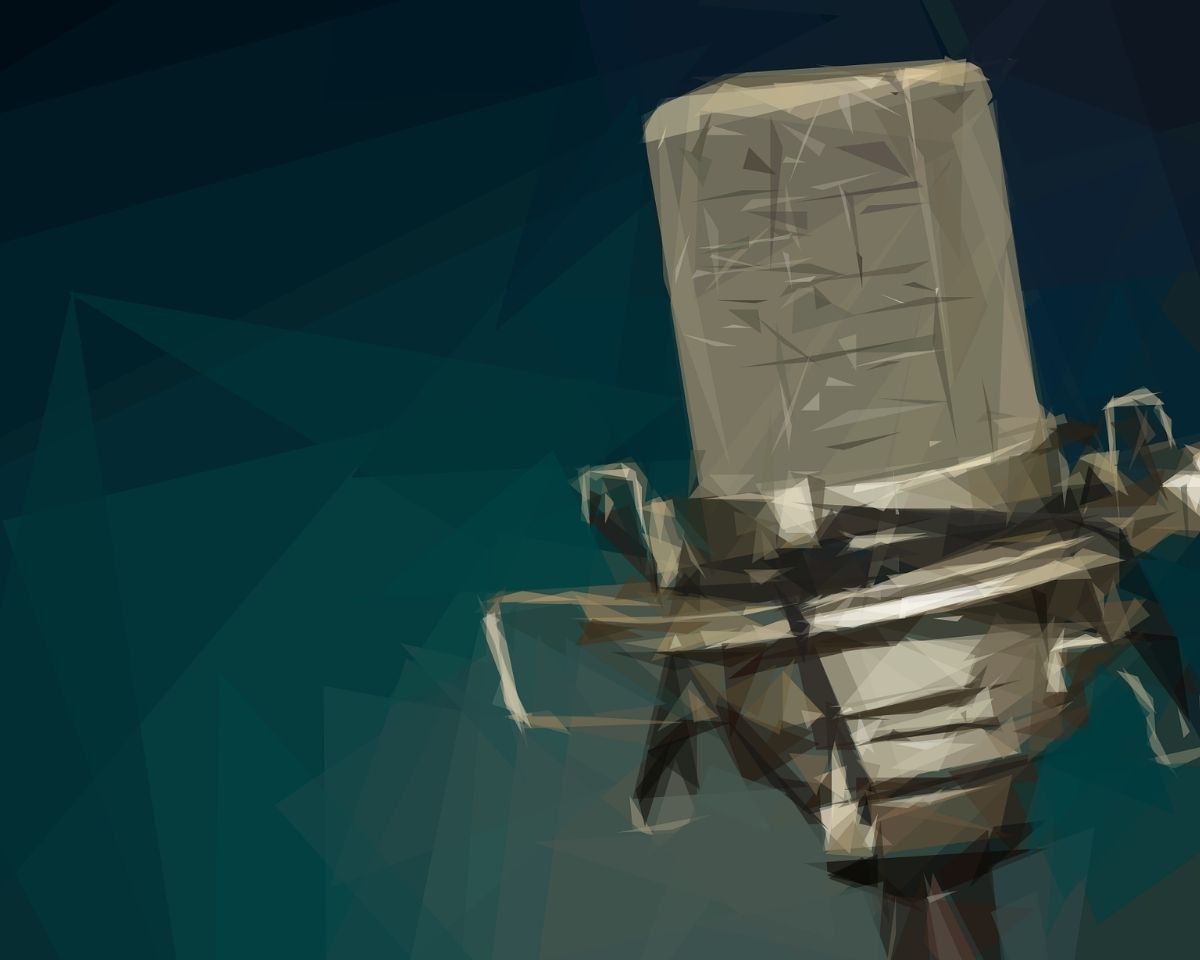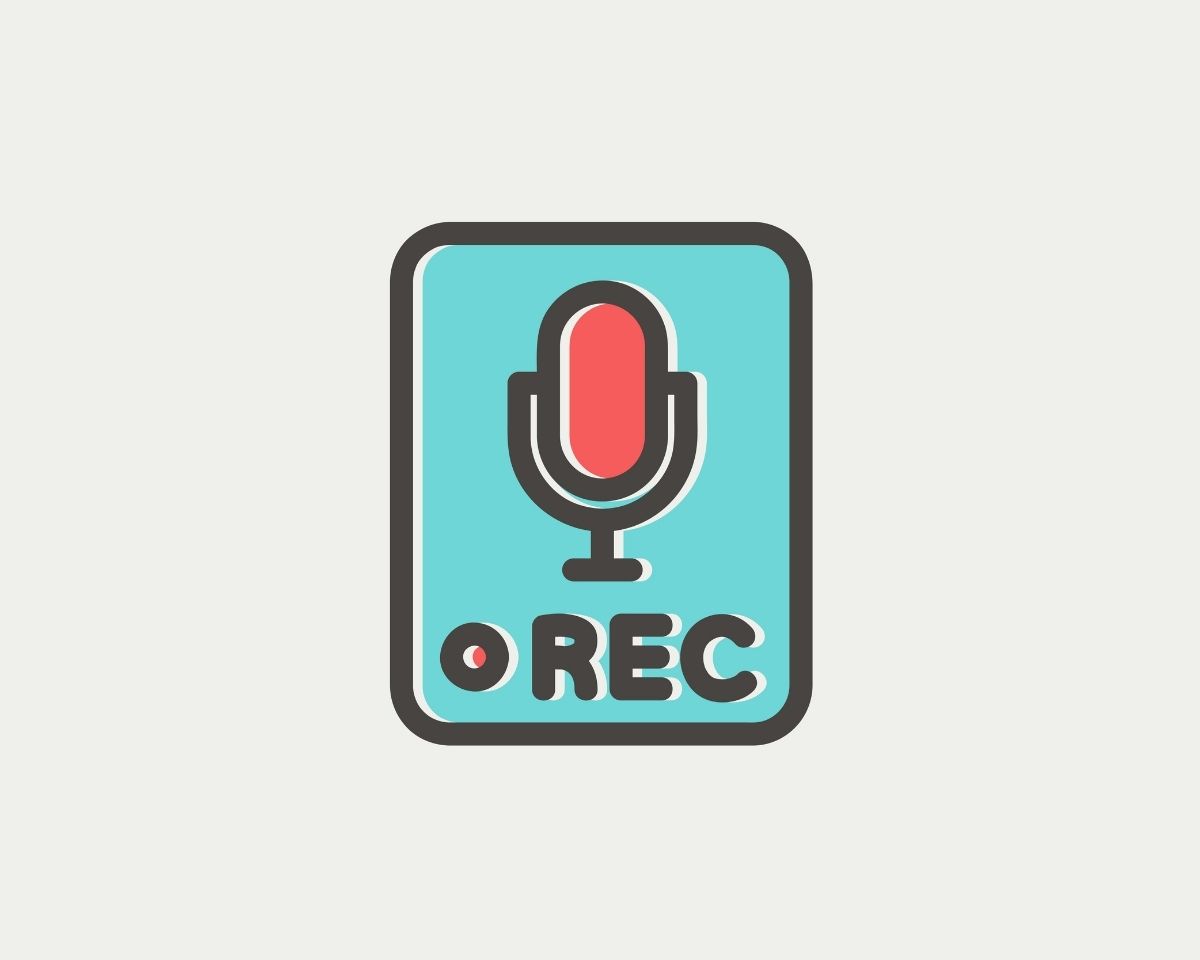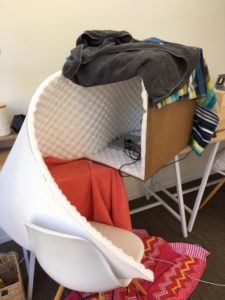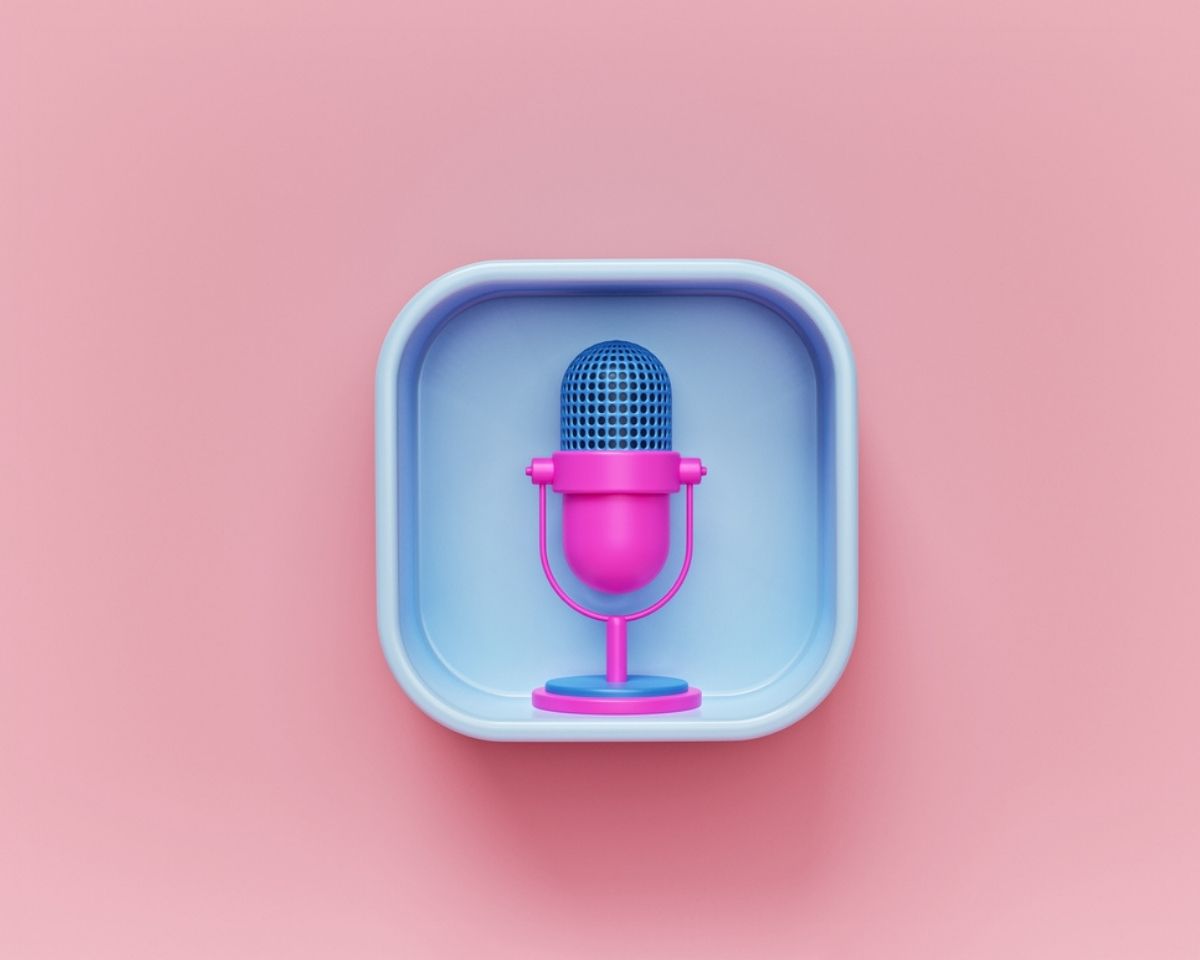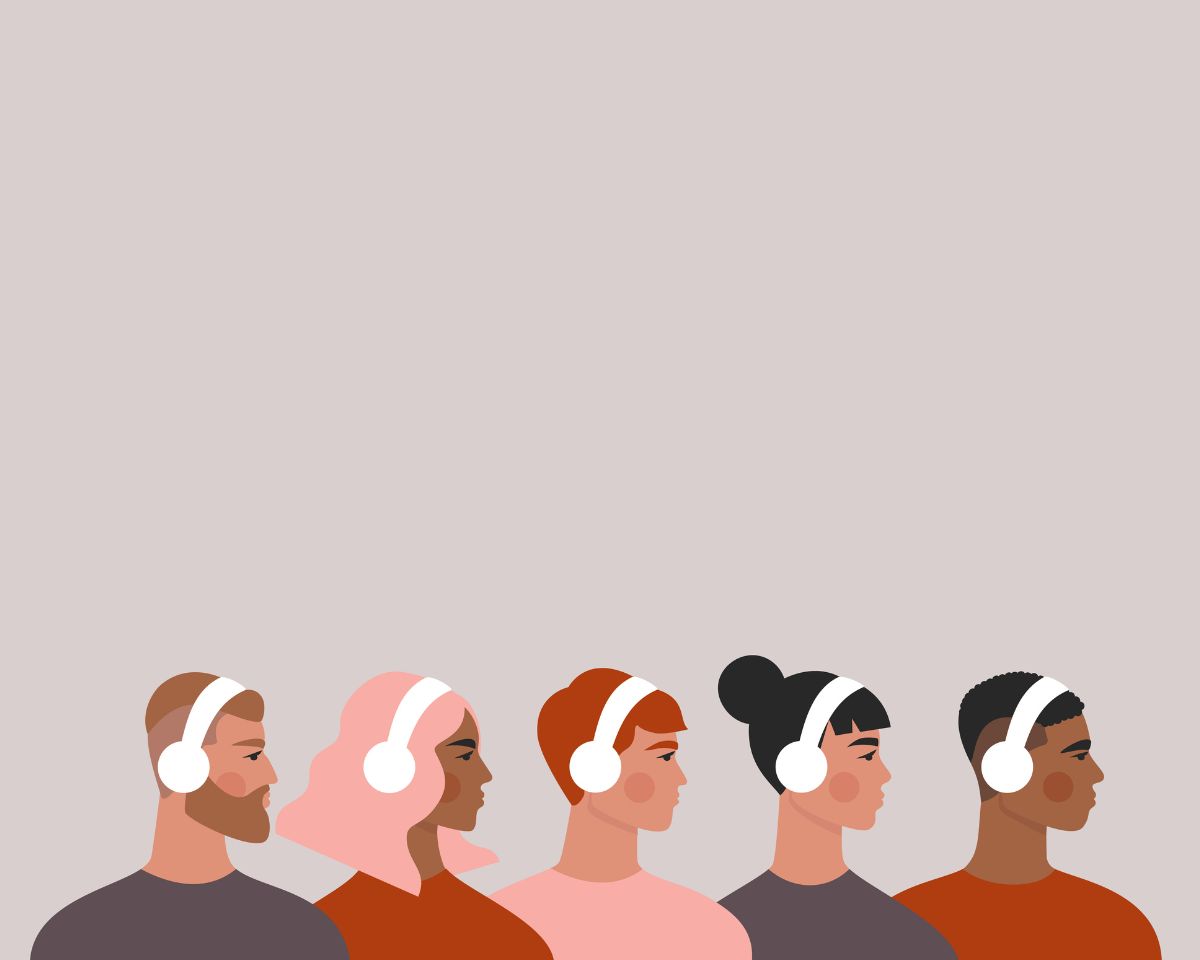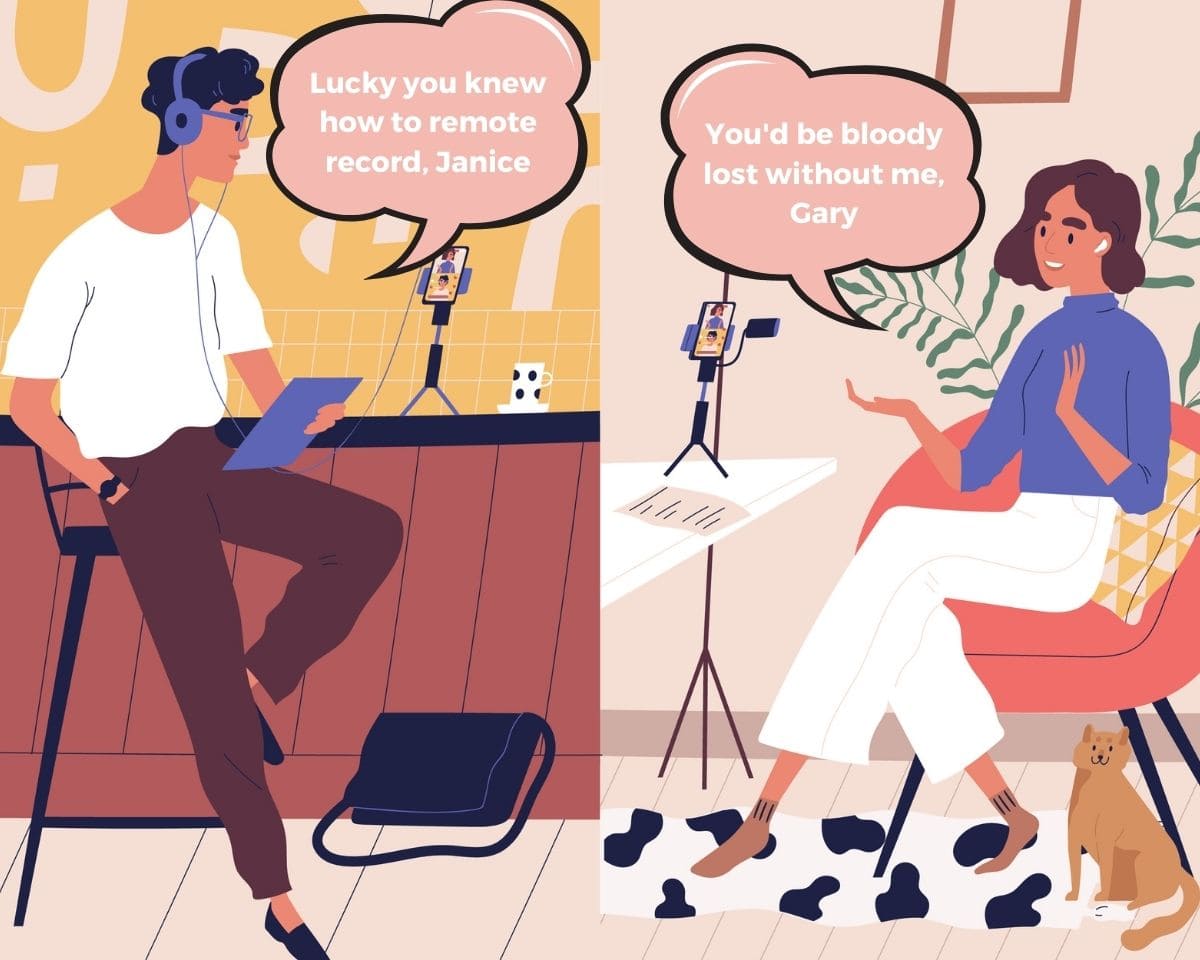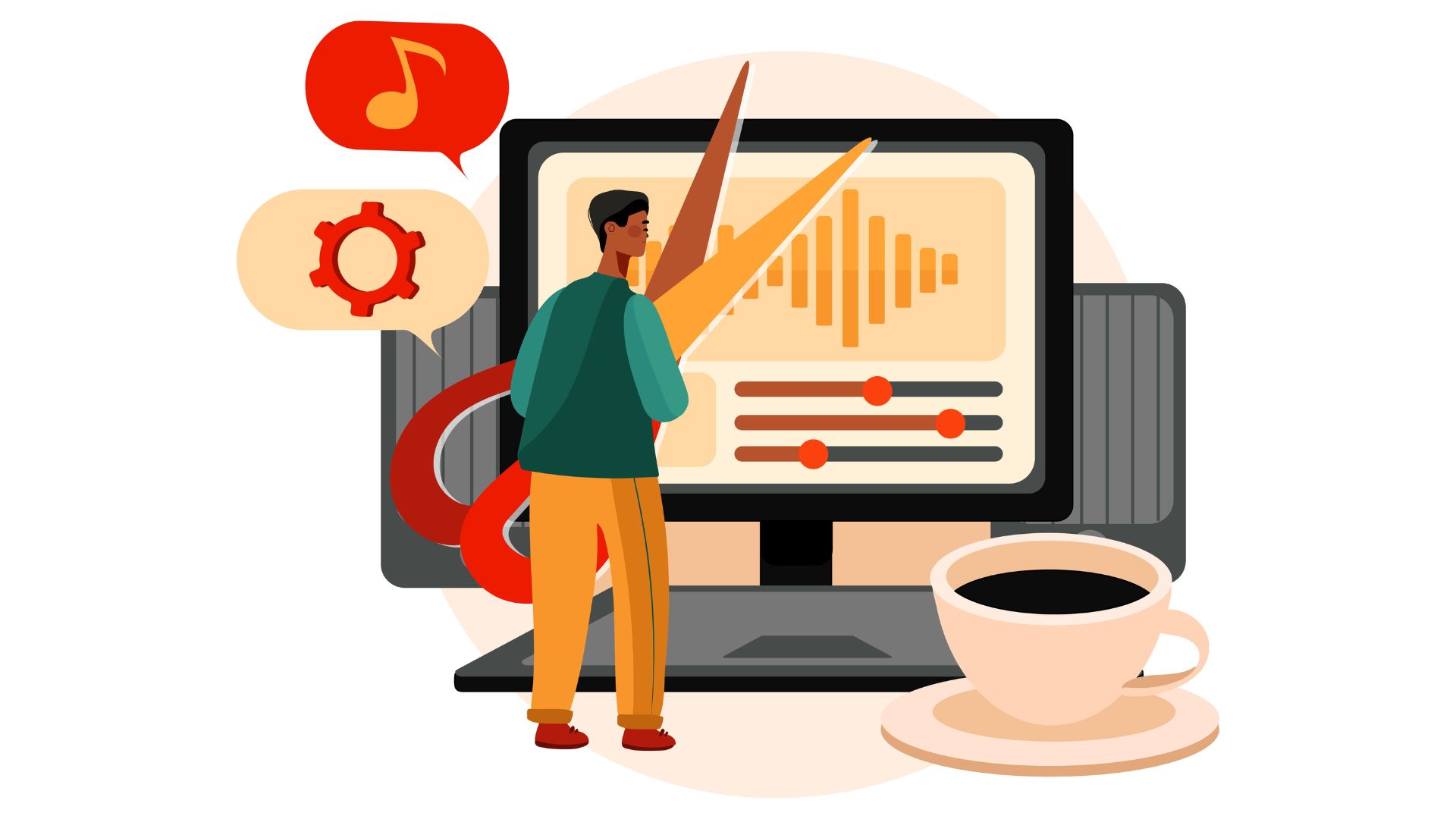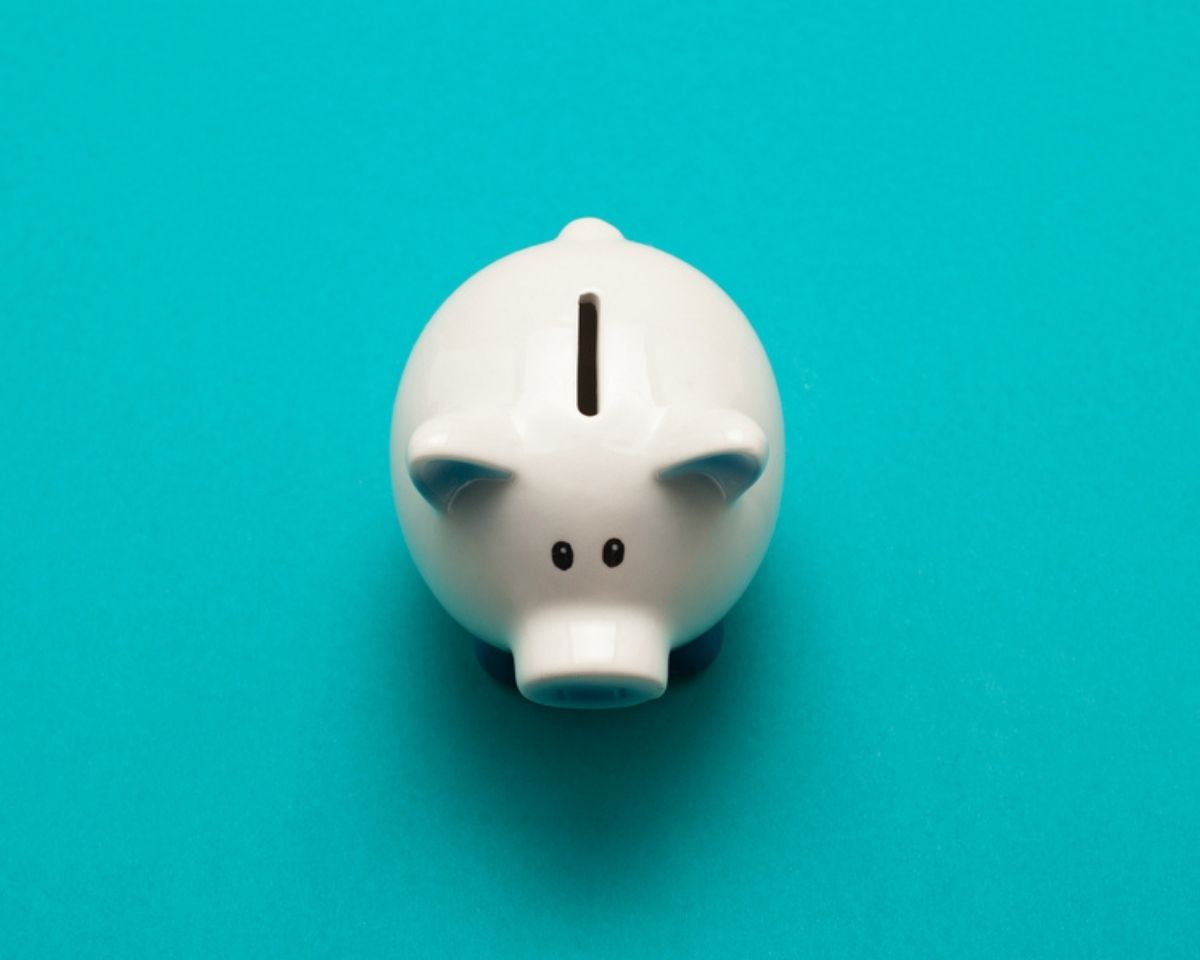How to turn your house into a podcast recording studio…on the cheap
You don’t need to hire a professional studio or set up an expensive voice-over booth to record high-quality podcast audio at home.
In fact, sometimes all you need to do is draw the curtains…
[button text=”Apple” url=”https://itunes.apple.com/au/podcast/podschool-learn-how-to-create-professional-podcast/id1239671724?mt=2″ class=””] [button text=”Google” url=”https://www.google.com/podcasts?feed=aHR0cHM6Ly9yc3Mud2hvb3Noa2FhLmNvbS9yc3MvcG9kY2FzdC9pZC8xMzAz” class=””] [button text=”Spotify” url=”https://open.spotify.com/show/1Q2L51iY2sIL8BEkAKyxZj” class=””]
Make your space recording-friendly
If you want to record high-quality audio one of the most important things to think about is where you record.
Reflective surfaces are the enemy of good audio so you want to avoid rooms with tiles, windows or high ceilings.
Recording in an echoey space not only makes you sound further away from your audience (and intimacy is important in podcasting) it also makes your show harder to edit.
Especially if there’s more than one person talking.
When you’re recording around tiles or glass, the sound of your words bounces off those reflective surfaces so you end up with an audio “tail” at the end of everything you say.
This can make editing a nightmare because you can’t get a clean cut.
There are things you can do to the audio to clean it up when you’re editing but the more processing you do to your recording the more natural warmth you take out of your voice.
And that’s not a good thing.
Ideally, you want to record somewhere that’s going to give you the best quality audio in the moment and that’s somewhere where the sound can be absorbed into the surroundings rather than reflected off it.
Setting up your space doesn’t have to be difficult
In my old office, I had the trifecta of audio grief – high ceilings, floor-to-ceiling windows and hardwood floors.
To combat this I build my own mini-voice-over booth because my mic had to be hidden in a tiny cushiony cave to make it sound like I wasn’t recording on the toilet.
I built a (very unattractive) voice-over booth out of a cardboard box, some mattress underlay and just about every towel I could find in my house…
I’ve since moved to a new place that’s much more audio-friendly. It has curtains, carpet and softer furnishings so my microphone doesn’t need the industrial-strength protection it did before.
These days I can get away with using three large couch cushions that I arrange around my microphone – two on the sides in a triangle and one on top.
This gives me an enclosed space that absorbs the sound so you’d never know I was recording in my bedroom.
Listen to everything as you record
If you want to make sure you’re recording audio that sounds good you have to listen to it in the moment.
This will help you work out whether the room is too echoey, if you’re popping into the microphone when you speak, or if there are any distracting sounds in the background like an air conditioner.
If you adjust these things in the moment rather than hearing them for the first time in the edit you’ll save yourself a lot of hassle.
Don’t let your space stop you from getting started
When you’re starting out it’s easy to think you won’t be able to record high-quality audio at home but you absolutely can.
A lot of podcasters record in their closet, surrounded by clothes so it doesn’t have to be glamorous to get the job done.
You just need somewhere with soft furnishings rather than hard surfaces to make sure the audio you’re recording sounds as good as it possibly can.
And the great thing about podcasting is no one can see how you make the show.
So, as long as it sounds good, that’s all that matters.
Case in point…
Got a burning podcasting question you’d like answered? Send me an email.
Want to start your own podcast but need a little help? Download my “How To Start A Podcast” guide or sign up for my online podcasting course, PodSchool.
[00:00:00] Greetings from Los Angeles! I'm overseas at the moment for work and I'm currently recording in between a few couch cushions with a pillow over the top and I thought...what better time to talk about how to record decent audio at home. I've been emailed a number of times from people starting out asking how to get decent audio quality and whether they need to hire a voiceover booth to do that. The truth is you absolutely do not and it's an expense that you will not be able to justify if you are just starting out. Understandably voiceover booths can be really expensive to rent and why would you bother renting one when you can just make one at home? It will not be pretty and you will not leave it up to show other people but it will do the job. As I said I'm literally broadcasting to you from in between two couch cushions and this is exactly what I do at home as well.
[00:00:54] I have a very echoey office with a lot of windows and high ceilings and it's a nightmare to record audio in. The problem with an echoey space is that it becomes quite difficult to edit because you'll notice each of the words have a little tail on them where the sound is still bouncing around the room so you can't really get a clean cut. It's important to remove as much of that out of the record as possible if you want more control over the audio when you actually sit down to do something with it in Audition or whatever program you use. It doesn't have to be high tech, it doesn't have to be something that you spend a lot of money on. Anything in the realm of soft furnishings will give you a decent voice over booth.
[00:01:42] On the show notes page at PodSchoolPodcast.com I'll put a link to an article I wrote about making a voice over booth for under $50, which was literally a cardboard box, some mattress foam and a bit of adhesive spray. If you don't want to go to that much trouble then just do what I do and put two couch cushions in a triangle around your microphone, another one on top and "voila!" you have a voiceover booth. Not a very pretty one but one that works. Essentially, all you're trying to do is take your recording space from a big echoey room covered in hard surfaces to a smaller space where the sound can be absorbed into something soft and sometimes all you need to do to achieve that is to close the curtains. I record sometimes at my partners house and he has a carpeted bedroom and windows with pretty heavy curtains and I can record in there with nothing around my microphone as long as the curtains are drawn. You might not need to create a tiny little space to record in because you could have a decent enough sounding room as is (just make sure the windows are covered up etc.
[00:03:02] Really it's a bit of trial and error. It's really important to record your audio in the space that you intend to record and see if it sounds like you're recording on a toilet and if it does just put some blankets around or anything else that's soft that can kind of cover up the hard surfaces around where you're recording. The great thing about audio is nobody can see you so it doesn't have to look pretty. And the number of podcasters that you would listen to and think "Gee this show sounds good!" that are probably broadcasting from a closet surrounded by their clothes on hangers or somewhere equally as non glamorous is pretty large. It's easy to think when you're starting out "oh gosh I could never do this because I don't have the proper space and I don't have a voiceover booth." But very few people do. It's just about taking what you've got and making the best of that using what you've got around the house.
[00:04:02] Have a go at home - use your cushions, blankets and whatever you can find to cover up hard reflective surfaces and avoid things like recording in the kitchen or larger spaces where you have tiles on the floor or mirrors and windows . As I said it's going to be a bit of trial and error but just record some stuff and see the difference and you'll realise that just putting a few cushions around will give you the kind of sound you need.
[00:04:31] I hope that's helped you think about how to record at home so that it sounds professional by the time it gets to your dear listener. As always you can head to PodSchoolPodcast.com to get all the show notes and a link to that article where I will show you the create a $50 voice over booth.
[00:04:49] You can also head to PodSchool.com.au, my online podcasting course that takes you all the way from coming up with an idea to monetising your show.
[00:05:00] I'll see you next week and until then happy podcasting.
